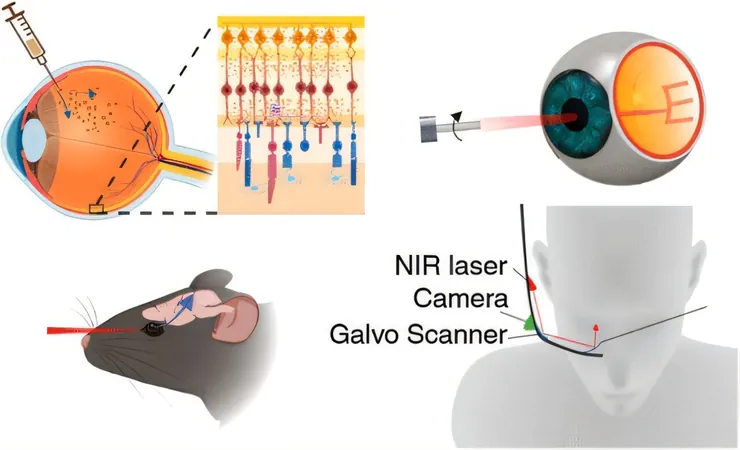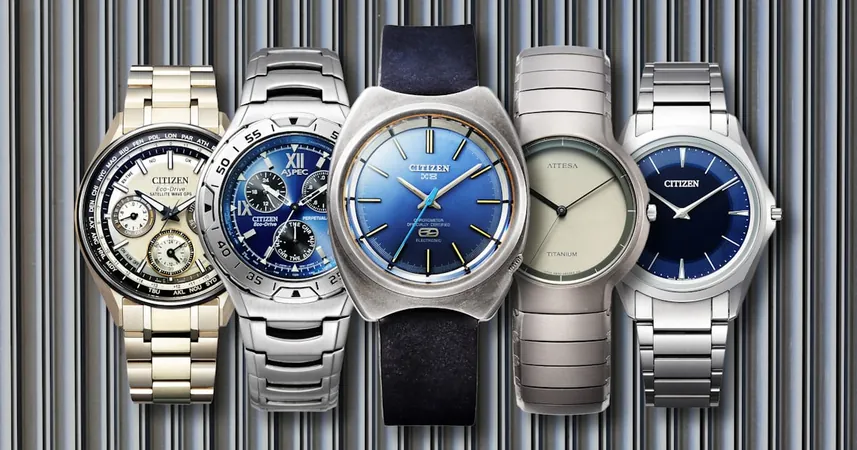
Golden Hope: How Gold Nanoparticles May Revolutionize Vision Restoration
2025-04-16
Author: Jia
A Breakthrough in Vision Restoration
Exciting news from Brown University researchers! They've unveiled a groundbreaking study suggesting that gold nanoparticles—tiny, microscopic bits of gold—might soon play a pivotal role in restoring vision for those suffering from macular degeneration and various retinal disorders.
How It Works
Published in the journal ACS Nano, the team's findings reveal that these nanoparticles, when injected into the retina, can effectively stimulate the visual system and potentially rejuvenate sight in mice afflicted with retinal damage. Imagine a future where a small laser device embedded in glasses or goggles works in tandem with these nanoparticles to bring clarity back to the eyes of those affected!
"This innovation represents a novel type of retinal prosthesis capable of restoring vision lost due to retinal degeneration, all without the need for intricate surgeries or genetic alterations," stated Jiarui Nie, a leading postdoctoral researcher involved in the study.
Targeting the Source of Blindness
Millions worldwide grapple with retinal disorders such as macular degeneration and retinitis pigmentosa, conditions known for damaging light-sensitive cells in the retina known as photoreceptors. These cells—the 'rods' and 'cones'—are essential for converting light into electrical signals that are processed by the brain.
This pioneering approach leverages nanoparticles to bypass the damaged photoreceptors. When near-infrared light is aimed at these nanoparticles, they generate heat, stimulating bipolar and ganglion cells just like the natural signals from healthy photoreceptors. What's thrilling is that while conditions like macular degeneration primarily affect photoreceptors, they leave other critical cells intact.
Promising Animal Trials
In recent experiments, the team applied this nanoparticle solution to mouse retinas. They then employed patterned near-infrared laser light to project shapes onto these retinas. Remarkably, they confirmed that the nanoparticles were successfully activating bipolar and ganglion cells, mirroring the shapes projected!
Crucially, their results indicated no harmful side effects from either the nanoparticles or the laser stimulation, as shown by the absence of inflammation or toxicity markers. Instead, there was increased activity in the visual cortices of the mice, suggesting actual vision restoration!
A Vision for the Future
The vision for human application involves a sophisticated system combining nanoparticles and an infrared laser embedded in glasses or goggles. Imagine wearing stylish eyewear that captures real-world imagery and sends it to a laser, stimulating nanoparticles in your retina—transforming blurriness into clarity!
This method holds significant advantages over previous FDA-approved approaches, which relied on surgically implanted electrode arrays. Unlike invasive surgery, the nanoparticle technique requires only a simple injection, making it much more approachable for patients.
Looking Ahead
While further research is essential before clinical trials can commence, this the promising study offers hope for a future where sight can be restored with minimal intervention. Gold nanoparticles might just be the key to illuminating the path back to vision for millions.



 Brasil (PT)
Brasil (PT)
 Canada (EN)
Canada (EN)
 Chile (ES)
Chile (ES)
 Česko (CS)
Česko (CS)
 대한민국 (KO)
대한민국 (KO)
 España (ES)
España (ES)
 France (FR)
France (FR)
 Hong Kong (EN)
Hong Kong (EN)
 Italia (IT)
Italia (IT)
 日本 (JA)
日本 (JA)
 Magyarország (HU)
Magyarország (HU)
 Norge (NO)
Norge (NO)
 Polska (PL)
Polska (PL)
 Schweiz (DE)
Schweiz (DE)
 Singapore (EN)
Singapore (EN)
 Sverige (SV)
Sverige (SV)
 Suomi (FI)
Suomi (FI)
 Türkiye (TR)
Türkiye (TR)
 الإمارات العربية المتحدة (AR)
الإمارات العربية المتحدة (AR)